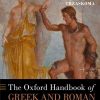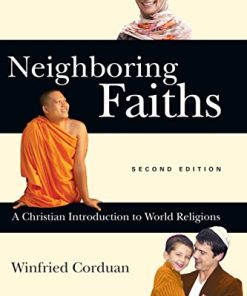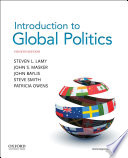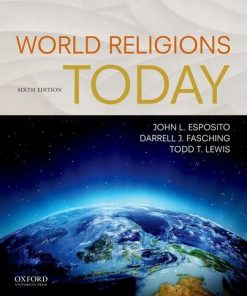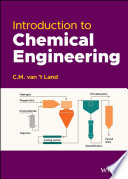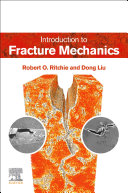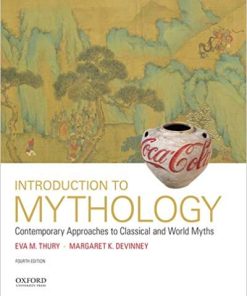RELG 4 Introduction to World Religions 4th Edition by Robert Van Voorst 8214351940 9798214351940
$50.00 Original price was: $50.00.$25.00Current price is: $25.00.
RELG 4: Introduction to World Religions 4th Edition by Robert E. Van Voorst – Ebook PDF Instant Download/DeliveryISBN: 8214351940, 9798214351940
Full download RELG 4: Introduction to World Religions 4th Edition after payment.
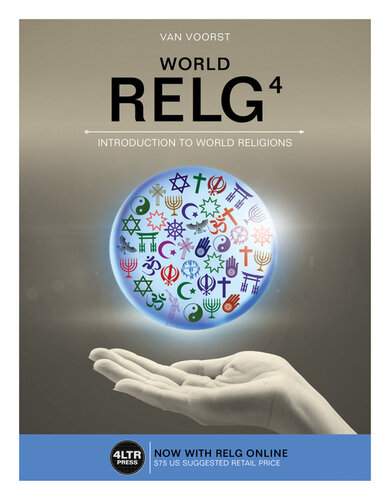
Product details:
ISBN-10 : 8214351940
ISBN-13 : 9798214351940
Author: Robert Van Voorst
Learn about World Religions YOUR Way with RELG: WORLD, 4th Edition! Undertake a fascinating journey as you explore the belief systems that have shaped societies throughout history. Pair your easy-reference, visually-engaging text with MindTap for access to highlighting and notetaking features, chapter quizzes, and ready-made study tools. MindTap for RELG: WORLD, 4th Edition allows easy exploration of world religions anywhere, anytime including on your mobile device through the MindTap Mobile App! Make and review flashcards, review related content, and track your scores within the Progress App all in one place and at an affordable price! your learning from memorization to mastery with MindTap.
RELG 4: Introduction to World Religions 4th Table of contents:
1. Beginning Your Study of World Religions
1-1. Coming to Grips with Your Preunderstanding of Religion
1-1a. What Is Preunderstanding?
1-1b. Your Preunderstanding of Religion
1-2. What Is Religion?
1-2a. Defining Religion
1-2b. Notable Definitions of Religion
1-2c. The Definition Used in This Book
1-3. Why Study Religion?
1-3a. Studying the Persistence of Religion in the Modern World
1-3b. What the Academic Study of Religion Can Offer You
1-4. Dimensions of Religion
1-4a. The Cognitive Dimension
1-4b. The Ethical Dimension
1-4c. The Ritual Dimension
1-4d. The Institutional Dimension
1-4e. The Aesthetic Dimension
1-4f. The Emotional Dimension
1-5. Ways of Studying Religion
1-5a. Theology and Religious Studies
1-5b. History
1-5c. Psychology
1-5d. Sociology
1-5e. Cultural Anthropology
1-5f. Women’s Studies
1-5g. Biology
1-5h. Conclusions about Methods of Studying Religion
1-6. Special Issues in the Study of Religion Today
1-6a. Tolerance and Intolerance
1-6b. Violence
1-6c. Pluralism
1-6d. Religion and Ecological Crisis
1-6e. New Religious Movements
1-AD. Primary Sources and Further Reading
CR-1. Learning
2. Encountering Indigenous Religions: Ways to Tribal Life
2-1. Names for This Type of Religion
2-1a. Traditional Religion
2-1b. Primitive Religion
2-1c. Animism and Totemism
2-1d. Manaism
2-1e. Shamanism
2-1f. Small-Scale Religions
2-1g. Nature Religion
2-1h. Indigenous Religions
2-2. Challenges to Study
2-2a. Lack of Written Sources
2-2b. Difficulty Discerning Continuity and Discontinuity
2-2c. Mainstream Guilt
2-2d. Misrepresentations in Popular Culture
2-2e. Misuse of Indigenous Rituals
2-3. Common Features of Indigenous Religions
2-3a. The Importance of Place
2-3b. Global Distribution
2-3c. Many Gods and Spirits
2-3d. Influenced by Other Cultures
2-3e. Based on Orality, Story, and Myth
2-3f. Oriented More toward Practice Than to Belief
2-3g. In-Group Based
2-3h. The Goodness of the World
2-3i. The Role of Religious Specialists
2-3j. Continuing Vitality
2-4. A Native American Religion: Lakota
2-4a. Name and Location
2-4b. Basic Features of Lakota Religion
2-4c. Lakota Rituals
2-4d. Lakota Culture and Religion: Decline and Signs of Revival
2-5. An African Religion: Yoruba
2-5a. High God and Other Gods
2-5b. Religious Specialists
2-5c. Spirits of the Ancestors
2-6. An Afro–Caribbean Religion: Vodou
2-6a. Location and Name
2-6b. Divinities
2-6c. Groups
2-6d. Worship
2-6e. Spell and Counter-Spell Rituals
2-6f. Political Influence in Haiti
2-7. Indigenous Religions Timeline: 1500–Present
2-AD. Primary Sources and Further Reading
CR-2. Learning
3. Encountering Hinduism: Many Paths to Liberation
3-1. The Name Hinduism
3-2. The Hindu Present as Shaped by Its Past
3-2a. The Vedic Period (1500–600 B.C.E.)
3-2b. The Upanishadic Period (600–400 B.C.E.)
3-2c. The Classical Period (400 B.C.E.–600 C.E.)
3-2d. The Devotional Period (600 C.E.–Present)
3-3. Essential Hindu Teachings
3-3a. Main Deities in the Three Devotional Movements
3-3b. Hindu Doctrinal Concepts
3-4. Hindu Ethics and Ways of Life
3-4a. The Caste System
3-4b. The Four Stages of a Man’s Life
3-4c. The Four Goals of Life
3-4d. The Lives of Hindu Women
3-5. Hindu Ritual and Meditation
3-5a. Images
3-5b. Worship in the Temple and the Home
3-5c. Pilgrimage
3-5d. Festivals and Holidays
3-5e. Funerals
3-5f. Yoga
3-6. Hinduism around the World Today
3-6a. Hinduism in South Asia and Africa
3-6b. Hinduism in the West
3-6c. Hindu Migration and Life in North America
3-7. Hinduism Timeline: 3000 B.C.E.–Present
3-AD. Primary Sources and Further Reading
CR-3. Learning
4. Encountering Jainism: The Austere Way to Liberation
4-1. The Name Jainism
4-2. The Jain Present as Shaped by Its Past
4-2a. Founding and the First Thousand Years (600 B.C.E.–ca. 400 C.E.)
4-2b. The Next Thousand Years (600–1600)
4-2c. Early Modern Times through Today (1600–Present)
4-3. Essential Jain Teachings
4-3a. No Gods
4-3b. Time and the World
4-3c. Jiva and Ajiva
4-3d. Karma and Liberation
4-3e. Theories of Knowledge
4-4. Ethics: The Five Cardinal Virtues
4-4a. Do No Harm; Speak the Truth
4-4b. Do Not Steal; Do Not Be Possessive
4-4c. Be Chaste
4-5. Jain Ritual and Worship
4-5a. The Life of Monks and Nuns
4-5b. Life of the Laity in Worship and Devotion
4-5c. Jain Funerals
4-5d. Two Jain Festivals
4-6. Jainism around the World Today
4-6a. Jainism in the West
4-6b. Jainism in North America
4-7. Jainism Timeline: 600s B.C.E.–1990s C.E.
4-AD. Primary Sources and Further Reading
CR-4. Learning
5. Encountering Buddhism: The Middle Path to Liberation
5-1. The Name Buddhism
5-2. Buddhism Today as Shaped by Its Past
5-2a. Gautama’s Road to Enlightenment
5-2b. Achievement of Enlightenment
5-2c. India, Sri Lanka, and Theravada
5-2d. The Rise of Mahayana: China and Japan
5-2e. Tibet and the Diamond Vehicle
5-3. Essential Buddhist Teachings
5-3a. The Four Noble Truths
5-3b. The Noble Eightfold Path
5-3c. The Three Characteristics of Existence
5-4. Buddhist Ethics for Monastics and Laypeople
5-4a. General Buddhist Morality
5-4b. The Five Precepts
5-4c. Other Precepts and Moral Rules
5-5. Buddhist Ritual and Meditation
5-5a. Temples
5-5b. Images of the Buddha
5-5c. Prayer and Meditation
5-5d. Protective Rituals
5-5e. Funeral Rituals
5-6. Buddhism around the World Today
5-6a. Buddhism in Modern Asia
5-6b. Buddhism Comes to the Western World
5-6c. Early Buddhist Immigration to North America
5-6d. The Next Wave of Buddhist Immigration
5-6e. Conclusion
5-7. Buddhism Timeline: 570 B.C.E.– Present
5-AD. Primary Sources and Further Reading
CR-5. Learning
6. Encountering Sikhism: The Way of God’s Name
6-1. The Name Sikhism
6-2. Sikhism Today as Shaped by Its Past: Two Key Periods
6-2a. The Ten Gurus
6-2b. Sikhism from British Rule until Today
6-3. Essential Sikh Teachings
6-3a. The One God
6-3b. Devotion to God
6-4. Key Sikh Ethics
6-4a. Rejection of Hindu Caste
6-4b. Other Moral Rules
6-5. Sikh Rituals and Worship
6-5a. The Gurdwara
6-5b. The Langar
6-5c. Sikh Life-Cycle Rituals from Birth to Death
6-5d. Other Festivals
6-6. Sikhism around the World Today
6-6a. The Sikh Diaspora
6-6b. The First Wave of Immigration to North America (1900–1940)
6-6c. Second and Third Waves to North America (1965–Present)
6-6d. Sikhism in Post-9/11 America
6-7. Sikhism Timeline: 1469–2014 C.E.
6-AD. Primary Sources and Further Reading
CR-6. Learning
7. Encountering Daoism and Confucianism: Two Views of the Eternal Way
7-1. The Names Daoism and Confucianism
7-2. Daoism and Confucianism Today as Shaped by Their Past
7-2a. China before the Rise of Daoism and Confucianism (ca. 3000–500 B.C.E.)
7-2b. The Origins of Daoism (ca. 500 B.C.E.–200 C.E.)
7-2c. Daoism from 200 C.E. to 1664 C.E.
7-2d. The Near-Destruction and Revival of Daoism (1644–1980)
7-2e. Confucius and the Origins of Confucianism (551–479 B.C.E.)
7-2f. The Rise of Confucianism and Neo-Confucianism (ca. 350 B.C.E.–1200 C.E.)
7-2g. The Modern Period of Daoism and Confucianism (1912–Present)
7-3. Essential Daoist and Confucian Teachings
7-3a. Ancient Teachings Common to Daoism and Confucianism
7-3b. Daoist Teachings on the Dao
7-3c. Traditional Daoist Deities
7-3d. Daoist Teaching of Wu Wei
7-3e. Daoist Views of Qi
7-3f. The Daoist Quest for Immortality
7-3g. Confucian Reformulations of Ancient Teachings
7-4. Daoist and Confucian Ethics
7-4a. Daoist Ethics
7-4b. Confucian Ethics
7-5. Ritual and Worship
7-5a. Daoist Temples and Worship
7-5b. Confucian Temples and Worship
7-5c. The Traditional Chinese Funeral
7-5d. A Final Comparison of Daoism and Confucianism
7-6. Daoism and Confucianism around the World Today
7-6a. Daoism and Confucianism in the West
7-6b. Confucianism in North America
7-6c. Daoism in North America
7-7. Daoism and Confucianism Timeline: 551 B.C.E.–Present
7-AD. Primary Sources and Further Reading
CR-7. Learning
8. Encountering Shinto: The Way of the Kami
8-1. Names
8-2. The Shinto Present as Shaped by Its Past
8-2a. Before the Arrival of Buddhism (up to 600 C.E.)
8-2b. Shinto and Buddhism Together in Japan (600–1850)
8-2c. The Meiji Period (1850–1945)
8-2d. Shinto in Recent Times (1945–Present)
8-3. Shinto Teachings
8-3a. The Kami
8-3b. Characteristics of Other Shinto Teachings
8-4. Shinto Ethics
8-4a. General Characteristics
8-4b. Purity
8-5. Shinto Ritual
8-5a. The Shinto Shrine
8-5b. The Shinto Priesthood
8-5c. Prayer Plaques and Fortunes
8-5d. The Wedding Ceremony
8-5e. The Home Shrine
8-5f. The Shinto Funeral
8-6. Shinto around the World Today
8-7. Shinto Timeline: 250–Present
8-AD. Primary Sources and Further Reading
CR-8. Learning
9. Encountering Zoroastrianism: The Way of the One Wise Lord
9-1. Names for Zoroastrianism and Zoroastrians
9-2. Zoroastrianism as Shaped by Its Past
9-2a. The Birth of Zoroastrianism (ca. 630–550 B.C.E.)
9-2b. The Spread of Zoroastrianism in the Persian and Sassanian Empires (550 B.C.E.−650 C.E.)
9-2c. The Coming of Islam and the Zoroastrian Dispersion (650 C.E.−Present)
9-3. Essential Zoroastrian Teachings: Monotheism and Moral Dualism
9-3a. The One God, Ahura Mazda
9-3b. The Spirit of Destruction, Angra Mainyu
9-3c. Moral Dualism
9-3d. Supernatural Intermediaries
9-3e. Judgment and the Final Victory of Ahura Mazda
9-4. Zoroastrian Ethics
9-4a. Zoroastrian General Morality
9-4b. A Current Ethical and Social Issue: Marriage and Children
9-5. Zoroastrian Rituals
9-5a. Fires in the Fire Temple
9-5b. Interior Plan of the Fire Temple
9-5c. Priesthood
9-5d. Worship
9-5e. Other Rituals
9-5f. Funeral Rituals
9-6. Zoroastrianism around the World Today
9-7. Zoroastrianism Timeline: 1750 B.C.E.–2000 C.E.
9-AD. Primary Sources and Further Reading
CR-9. Learning
10. Encountering Judaism: The Way of God’s People
10-1. The Name Judaism and Related Terms
10-2. The Jewish Present as Shaped by Its Past
10-2a. From the Creation to Abraham (ca. 2000 B.C.E.)
10-2b. The Emergence of Ancient Israel (ca. 1200–950 B.C.E.)
10-2c. The First Temple Period (950–586 B.C.E.)
10-2d. The Second Temple Period (539 B.C.E.–70 C.E.)
10-2e. Revolts and Rabbis (70 C.E.–ca. 650)
10-2f. Jews under Islamic and Christian Rule (ca. 650–1800)
10-2g. Emancipation and Diversity (1800–1932)
10-2h. The Holocaust and Its Aftermath (1932–Present)
10-3. Essential Teachings of Judaism
10-3a. Foundation of Jewish Teachings: The Tanak
10-3b. One God
10-3c. The Jews as God’s Chosen People
10-3d. Life after Death?
10-4. Essential Jewish Ethics
10-4a. Humans in the Image of God
10-4b. The Torah
10-4c. General Jewish Ethics
10-4d. Modern Jewish Ethics
10-5. Jewish Worship and Ritual
10-5a. Worship in the Synagogue
10-5b. The Sabbath
10-5c. Jewish Annual Festivals
10-5d. Kosher Food
10-5e. Circumcision, the Sign of the Covenant
10-5f. Bar Mitzvah and Bat Mitzvah
10-5g. Marriage
10-5h. Funeral Rituals
10-6. Judaism around the World Today
10-6a. Judaism in Israel
10-6b. Judaism in North America
10-7. Judaism Timeline: 2000 B.C.E.–Present
10-AD. Primary Sources and Further Reading
CR-10. Learning
11. Encountering Christianity: The Way of Jesus Christ
11-1. Names
11-2. The Christian Present as Shaped by Its Past
11-2a. The Life, Death, and Resurrection of Jesus Christ (ca. 4 B.C.E.–30 C.E.)
11-2b. The Earliest Church (30–100 C.E.)
11-2c. The Ancient Period (100–500 C.E.)
11-2d. Byzantine, Medieval, and Renaissance Christianity (500–1500)
11-2e. Reformation in the Western Church (1500–1600)
11-2f. The Early Modern Period (1600–1900)
11-2g. Modern Christianity (1900–Present)
11-3. Christian Teachings as Reflected in the Nicene Creed
11-3a. God the Father
11-3b. God the Son
11-3c. God the Holy Spirit
11-3d. The Conclusion of the Nicene Creed: Church, Baptism, and Christian Hope
11-4. Christian Ethics: Following the Way of Jesus Christ
11-4a. Foundations in the Ten Commandments, the Sermon on the Mount, and the Letters of Paul
11-4b. The Enactment of Moral Life in the Church
11-4c. Moral Dimensions of Liberation Movements
11-5. Christian Worship and Ritual
11-5a. Foundations of Christian Worship
11-5b. The Liturgical Year
11-5c. The Christian Funeral
11-6. Christianity around the World Today
11-6a. Christianity in the Global South
11-6b. Changes in the Catholic Church under Pope Francis
11-6c. Christianity in North America
11-6d. The Different Churches in the United States: Roman Catholic and Protestant
11-7. Christianity Timeline: 27–2013 C.E.
11-AD. Primary Sources and Further Reading
CR-11. Learning
12. Encountering Islam: The Straight Path of the One God
12-1. The Name Islam
12-2. Islam Today as Shaped by Its Past
12-2a. Arabia at the Time of Muhammad (500s C.E.)
12-2b. The Life and Work of Muhammad (ca. 570–632)
12-2c. Islam Immediately Following the Death of Muhammad (632–661)
12-2d. Islam from the Umayyads until Today (661–Present)
12-2e. Diverse Muslim Groups Today: Mainstream, Zealous, and Moderate
12-3. Essential Islamic Teachings
12-3a. God Is One
12-3b. Angels and Spirits
12-3c. The Qur’an
12-3d. Prophets
12-3e. People of the Book: Jews, Christians, and Zoroastrians
12-3f. Final Judgment
12-4. Islamic Ethics
12-4a. The Hadith
12-4b. Shari’a
12-4c. Diet and Other Regulations
12-4d. Marriage and the Status of Women
12-4e. Jihad
12-5. Worship and Ritual: The Five Pillars of Islam
12-5a. Confession of Faith
12-5b. Prayer
12-5c. Fasting
12-5d. Almsgiving
12-5e. Pilgrimage
12-5f. The Muslim Funeral
12-6. Islam around the World Today
12-6a. Islam in Europe
12-6b. Muslim Migration to North America
12-6c. Muslim Life in the United States after 9/11
12-7. Islam Timeline: 570 C.E.–Present
12-AD. Primary Sources and Further Reading
CR-12. Learning
13. Encountering New Religious Movements: Modern Ways to Alternative Meanings
13-1. Names for This Type of Religion
13-2. Common Features of New Religious Movements
13-3. New Religious Movements in the World Today: A Survey
13-3a. NRMs in the Western World
13-3b. Asian NRMs in the West
13-3c. Scientific NRMs: Christian Science and UFO Groups
13-3d. Nature NRMs: Neo-Paganism, Wicca, and Druidry
13-3e. NRMs in Asia
13-4. An NRM from Asia: Falun Gong
13-4a. History
13-4b. Teaching and Practice
13-5. A North American NRM: The Church of Jesus Christ of Latter-day Saints
13-5a. History
13-5b. Scripture
13-5c. Teachings
13-5d. Institutions, Practices, and Structure of the LDS Church
13-6. A North American NRM: The Nation of Islam
13-7. The Church of Scientology
13-7a. L. Ron Hubbard’s Life and Teachings
13-7b. Organization of the Church
13-7c. Controversy and Present Status
13-8. New Religious Movements Timeline: 1782–2009
People also search for RELG 4: Introduction to World Religions 4th:
4 main world religions
relg world 4th edition
relg world 4th edition pdf free
relg world 4th edition ebook
introduction to world religions syllabus
Tags: RELG 4, Introduction, World Religions, Robert Van Voorst
You may also like…
Politics & Philosophy - Anthropology
World Religions : Western Traditions, 5th Edition Roy C. Amore
Uncategorized
Neighboring Faiths: A Christian Introduction to World Religions 2nd Edition, (Ebook PDF)
Politics & Philosophy - Social Sciences
Introduction to Global Politics 4th Edition by Steve Lamy, John Masker 0190299797 978-0190299798
Religion & Spirituality - Religious Studies
Engineering - Chemical Engineering
Engineering - Aerospace Engineering
Uncategorized
Politics & Philosophy - Anthropology
Politics & Philosophy - Anthropology


